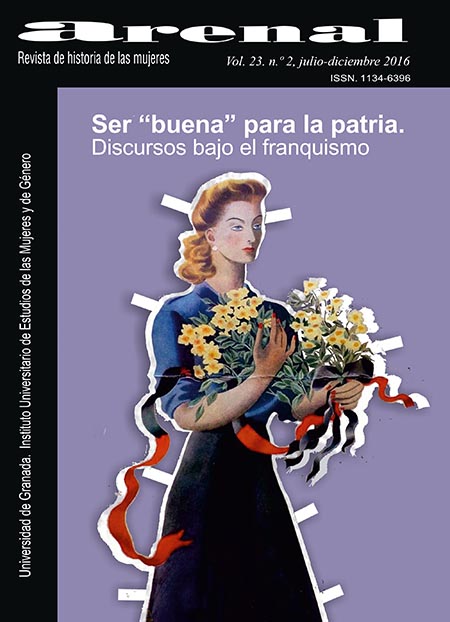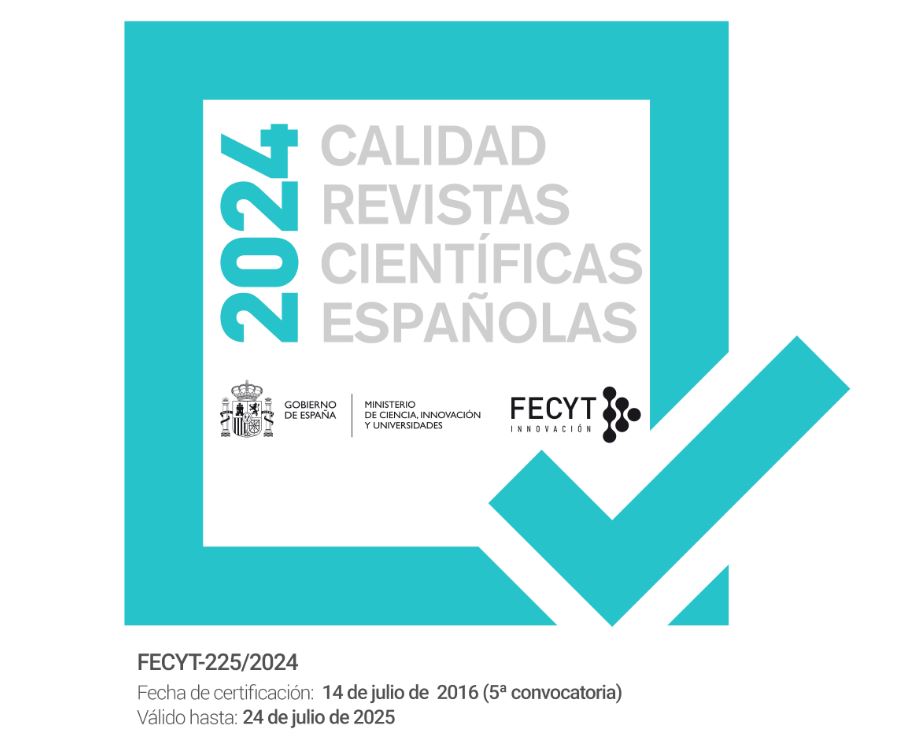La instrucción de enfermeras como labor ideológica de la Sección Femenina (1939-1953)
DOI:
https://doi.org/10.30827/arenal.v23i2.3047Palabras clave:
Enfermeras, Franquismo, Asistencia Social, Sanidad, Pobreza, Instrucción.Resumen
La movilización de las mujeres por parte de Falange durante la guerra civil y la posguerra adoptó unos caracteres y estructura organizativa similares a los movimientos fascistas europeos de entreguerras. El hambre, el racionamiento, las deficiencias sanitarias e higiénicas, la escasez de alimentos, entre otros, motivaron que gran parte de los ciudadanos tuvieran que luchar por la supervivencia diaria. Sobre la marcha hubo que improvisar enfermeras con varios miles de muchachas, en general muy jóvenes, que a golpe de cursos acelerados de enfermería adquirían el título con voluntad de servicio a la patria actuando siempre bajo el total acatamiento, obediencia y sumisión. En este trabajo se estudiará el papel que el franquismo atribuyó a la enfermera para asegurar la viabilidad de aquella sociedad en la lucha contra la enfermedad. Para llevar a cabo esta investigación se ha consultado: la Hemeroteca de la Diputación Provincial de Almería (Yugo), la Hemeroteca Municipal de Sevilla (F.E. y El Correo de Andalucía) y la Hemeroteca digital (La Vanguardia Española).
Descargas
Descargas
Publicado
Cómo citar
Número
Sección
Licencia
Derechos de autor 2016 María Carmen Giménez Muñoz

Esta obra está bajo una licencia internacional Creative Commons Atribución-NoComercial-SinDerivadas 4.0.
Los/as autores/as que publican en esta revista están de acuerdo con los siguientes términos:
Los autores/as conservarán sus derechos de autor y garantizarán a la revista el derecho de primera publicación de su obra, el cuál estará simultáneamente sujeto a la Licencia de reconocimiento de Creative Commons 4.0 BY-NC-ND que permite a terceros compartir la obra siempre que se indique su autor y su primera publicación esta revista.
Los autores/as podrán adoptar otros acuerdos de licencia no exclusiva de distribución de la versión de la obra publicada (p. ej.: depositarla en un archivo telemático institucional o publicarla en un volumen monográfico) siempre que se indique la publicación inicial en esta revista.
Se permite y recomienda a los autores/as difundir su obra a través de Internet (p. ej.: en archivos telemáticos institucionales o en su página web) antes y durante el proceso de envío, lo cual puede producir intercambios interesantes y aumentar las citas de la obra publicada. (Véase El efecto del acceso abierto).














